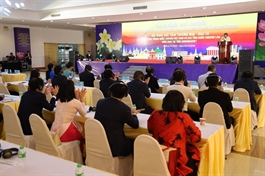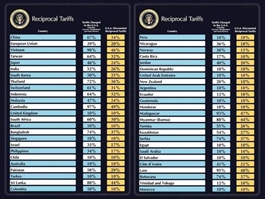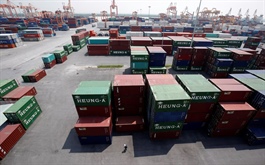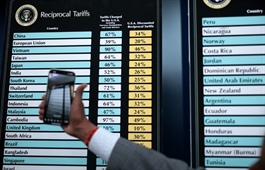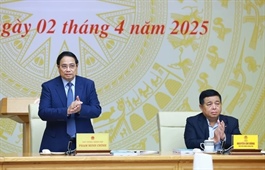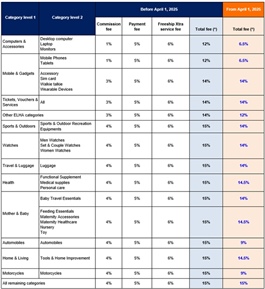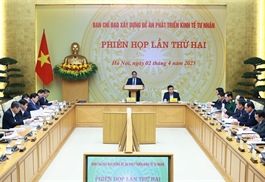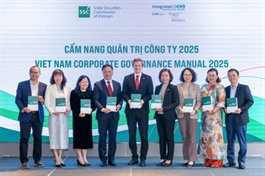Vietnam should seek dialogue to cope with reciprocal tariff policy
Vietnam should seek dialogue to cope with reciprocal tariff policy
The US' 46 per cent reciprocal tariff policy will significantly impact Vietnam’s export markets. VIR’s Bich Ngoc spoke with Vlad Savin, a partner from Acclime Vietnam, about his views on the matter.

Vlad Savin, partner from Acclime Vietnam |
How will the 46 per cent reciprocal tax policy impact Vietnam's export market?
The 46 per cent reciprocal tariff policy will significantly impact Vietnam’s export market, given the US’ role as Vietnam’s largest export destination, accounting for $136.6 billion in goods in 2024, roughly 30 per cent of Vietnam’s GDP.
This tariff, applied to a broad range of goods, will likely disrupt key export sectors where Vietnam holds substantial US market share, including computers and electronics, textiles, wood products, and footwear.
Vietnam’s electronics sector, a cornerstone of its export economy, includes products like computers, telephones, and machinery, with major firms such as Samsung, Intel, and Foxconn being affected. These firms could see their cost advantages erode if prices surge due to the tariffs. In the near term, the reciprocal tax policy championed by Trump could trigger a chain reaction: higher product prices, reduced order volumes, and shrinking profit margins for these firms.
Next, Vietnamese export firms in the wood, textile, and footwear sectors are bracing for substantial challenges driven by fierce global competition, the flexibility of shifting production chains, and acute price sensitivity. The looming imposition of higher US tariffs threatens to exacerbate these difficulties, with escalating costs and export barriers poised to strain these industries further.
In the short term, we expect orders coming from the US to shrink due to higher costs in respect to the aforementioned product lines, and revenue and supply chain challenges for existing manufacturers in Vietnam to increase substantially. As Vietnam is an export-driven economy, this rebalancing of its value chain will certainly affect the country’s GDP growth aspirations of 8 per cent. Also, new investors that were strategically in the process of expanding their operations in Vietnam in the manufacturing and export sectors will have to think again about their revenue models and target client bases, and potentially make adjustments to reflect the additional tariffs imposed on Vietnam.
Ultimately, nobody wins in this trade war. American consumers will bear the burden of sharply rising commodity prices and heightened inflation risks, while businesses will face significant hurdles in reallocating production chains due to logistical and operational complexities. Similarly, tariff-targeted nations like Vietnam will confront substantial economic challenges. As US Treasury Secretary Scott Bessent said, “Doing anything rash would be unwise,” suggesting that Vietnam has a window to pursue negotiations that could foster mutually beneficial outcomes.
What would Acclime advise the government to do to support negotiations with the US as well as take advantage of opportunities from FTAs to open up new markets?
To mitigate the adverse effects of the new US tariff policy, the Vietnamese government can evaluate and execute the following measures:
The State Bank of Vietnam (SBV) is dedicated to maintaining an adaptable exchange rate framework, enabling the country to effectively navigate global economic shifts and the repercussions of US tariffs. An adaptable exchange rate framework typically means allowing the VND to fluctuate within a managed range rather than pegging it rigidly to a currency like the US dollar. This approach gives the SBV room to adjust the currency’s value in response to external shocks, such as tariffs that make Vietnamese exports to the US more expensive.
Vietnam can leverage both bilateral and multilateral dialogues to foster stable trade ties with the United States, while simultaneously gathering insights and recommending solutions to address trade-related challenges.
The government may push businesses to target alternative markets (EU, Japan, South Korea, Middle East, ASEAN) to reduce dependence on the US and build resilience against tariffs. Vietnam has joined 20 free trade agreements (FTAs), including 16 FTAs that have already been implemented like the EVFTA (EU), CPTPP (Japan, Canada, etc.), and RCEP (Asia-Pacific), making this a natural pivot.
We think these solutions show adaptability, leveraging monetary tools, diplomatic agility, and trade networks. If executed well, they could turn a tariff crisis into an opportunity to rebalance the economy and open a new chapter for Vietnam’s economy.
- 11:20 04/04/2025




